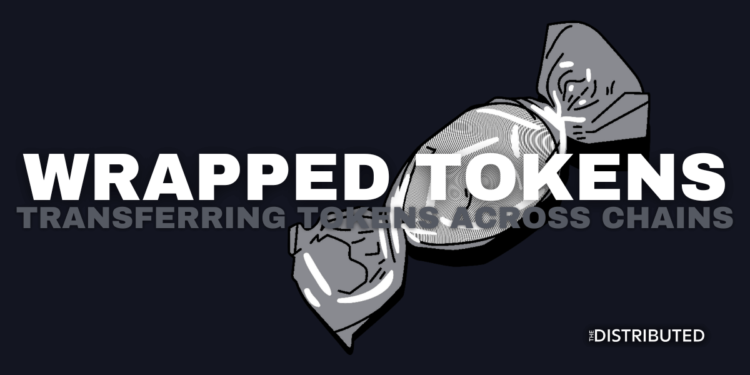What Is A Wrapped Token?
A wrapped token transfers the value of one cryptocurrency across to another chain. They are tokenized versions of tokens.
A token allows for information and value to be stored, transferred, and verified within a blockchain. These tokens can be fungible, or non-fungible. Tokens don’t function on other chains, so they are pegged to the value of the original token, in a way native to another chain.
A wrapped token helps interoperability between chains by creating a bridge for tokens from one chain to another. This makes decentralized finance (DeFi) and decentralized applications (dApps) more accessible, as users don’t have to sell and buy tokens depending on what they’re doing.
How Do Wrapped Tokens Work?
Wrapped tokens are “wrapped” into a digital vault, typically owned by a custodian, which would then mint the wrapped token on another chain. These custodians can be smart contracts, decentralized autonomous organisations (DAOs), multisig wallets, or merchants.[1]Binance – What Are Wrapped Tokens? The custodian would need to possess equal amounts of whatever token is being wrapped such at Bitcoin, with proof of the reserves shown on-chain.
In the case of Wrapped Bitcoin (wBTC), a user will send BTC to the custodian (multisig contract owned by the wBTC DAO) who will mint the coin on the other chain based on how much was recieved. If the user wants to recieve their standard BTC back, the user will put a burn request to the custodian which will release the BTC from the reserves.[2]wBTC Network – How It Works
What Are Wrapped NFTs?
A wrapped non-fungible token (NFT) allows for greater use cases of NFTs, which are tokens that have distinctive features separating it from other tokens.
In the case of Ethereum, a wrapped NFT expands its functionaility by enabling ERC-721 tokens to be wrapped as ERC-20 tokens. This allows them to be used like a cryptocurrency[3]EIP3349 – Generalized interface for ERC721 wrapping and unwrapping such as for collateral and payments, while maintaining their non-fungibility as new tokens can’t just be minted or mined.
References



